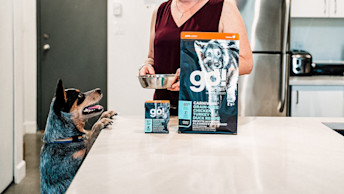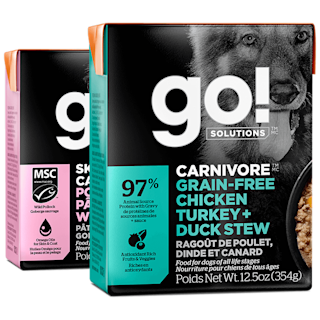May 31, 2021
How to Feed Your Picky Dog

Do you have a picky eater on your hands? At one point or another in our dog-parenting lives, we may face the dilemma of dealing with a fussy dog. Surprisingly, sometimes dogs aren't food motivated, and other times the problem is actually caused by us, their owners. More often than not, when it comes to picky eating, smaller dogs tend to be more particular than their larger breed friends. However, regardless of size or breed, a picky puppy can be a challenge for its owners. Here are our top tips on how to feed a picky dog.
Rule Out Possible Medical Issues
A dog that is feeling unwell, for any reason, may refuse to eat. If you find your dog is usually a consistently good eater, be sure to rule out any medical issues that may be the onset of sudden picky eating. Therefore, it's essential to bring your dog for routine check-ups to the vet to ensure your pup is always in good health.
Set Household Rules
When dealing with a dog or puppy who's a picky eater, it's important to remember to set some household rules that the entire family agrees to follow. Changing a dog's eating habits is no easy task, and it takes the cooperation of everyone in the house to effect changes for the better. Setting ground rules early on is the best way to make an easy transition when it comes to your dog's diet.
Don't Over-Indulge Your Dog
Often a picky eater will be the result of over-indulgence on the part of their owners. Feeding from the dining table or giving treats all day long will dull your dog's appetite and, in the end, may cause them to not favour their dog food any longer. After all, who wouldn't prefer a tasty dish of human food to a bowl of kibble?
Tip: Cut out excessive treats and don't offer any 'human' food to your dog during the day or from your dining table or kitchen while you're cooking.
The general rule of thumb is offering a treat no more than two or three times a day, preferably when you're training or your dog does something that pleases you. Put two or three treats in a particular container that everyone in the house knows about, and once the container is empty, that's all the treats for the day!
Set a Feeding Schedule
While some dog owners tend to free feed – leaving food down for their dogs throughout the day may not be the best idea. It's beneficial to set a feeding schedule, and sticking to it may help you convince your dog that eating on time is a good idea if they don’t want to go hungry. Feeding two smaller meals a day rather than one large one can make a huge difference. Give them 15 minutes to clean up their meal, and if they don't touch it, pick it up. Your dog will soon figure out what's going on.
Create a Designated Feeding Area
Some dogs are sensitive to activity around them when they’re eating. Additionally, other dogs in the household who are more dominant may send out signals that prompt your picky eater to walk away from their food. It's a good idea to provide a quiet area free of distractions for your dog in cases like this.
Tip: Try feeding your dog in their crate. If trained properly, your dog will feel secure and not threatened by activity in the house.
Should I Add 'Extras' to My Dog's Meals?
Many people turn to add tasty extras to their dog's food to encourage them to eat. Chicken broth, canned food, or unique flavour-enhanced toppers can help promote your dog to consume kibble. It's important to remember not to make the 'extras' the central part of the meal, thereby unbalancing the diet. Sometimes a simple change in the brand or type of kibble can have the same enticing results, with no additions. Additionally, try feeding a premium kibble mixed with warm water, which will help bring out the food's enticing smells. If your dog isn’t happy about straight dry food, start with something similar and go from there.
Try Combination Feeding
If you haven’t thought about combination feeding when it comes to your dog’s diet - now is a great time to start. If your dog is already on a dry food diet, try adding some wet food into the mix. Try adding in a new texture and flavour, like our Go! Solutions Wet Food Recipes that will offer your dog not only tasty flavours, but premium quality ingredients, too.

Recommended Solutions
Pocket-sized paks of solutions-based nutrition
Formulated to provide solutions for dogs’ unique dietary needs including picky eating, dandruff or dull coat, and food allergies or sensitivities.
View wet food recipes
Consistency is Key
Remember, for dogs; consistency is more important than variety when it comes to their food. If you find a formula that works, be sure to stick with it. It’s important to convince your dog to eat a well-balanced diet, kibble or canned, regularly. Consistency on your part will bring about consistency on theirs.



